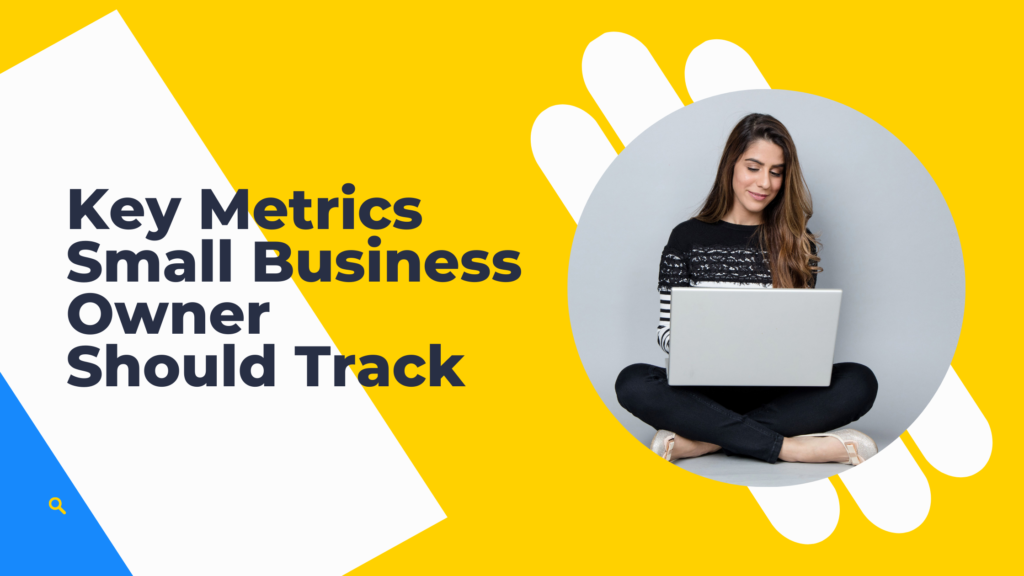Key Metrics Every Small Business Owner Should Track

This article will explain the key metrics every small business should track. I will also discuss ways to capitalize on your existing customers.
But first, let me share a true short story.
Throughout the years, I’ve sat with many small business owners, and by small, I mean entities that are compromised from 1 to 10 people.
These people were doing very well and had full-scale operations from procurement, sales, and even customer support, with an average annual turnover of 500k.
When I asked how you manage their operations and supply chain, they said they are primarily manual by collecting data like orders from their social media page messages and post comments. These data points are fed into several spreadsheets to complete the fulfillment process.
Can you relate to this story yourself or someone you know?
You concluded that with your company size, you only need an excel sheet to manage your business.
You could be right, or you could be missing out on an opportunity to grow.
I want to prove you wrong.
So, let’s break down the typical life cycle of a business:
Customer Acquisition
Customer acquisition is the process of acquiring new customers. All your marketing efforts and money through those paid ads serve this purpose.
A critical metric you should always calculate is your CAC or (Customer Acquisition Cost). This will give an insight into how much your company costs to obtain a new paying customer.
A simple method to calculate your CAC is to divide your (Cost of marketing & Sales) by (the number of newly acquired customers).
So, for example, if you spend 10$ on an ad campaign for January and end up with ten new paying customers, then your CAC for January is (10$/10 = 1 $).
Some would take a broader approach in defining their “Cost of marketing and sales” to include the costs of Ad spending + employee salaries + production costs + creative costs + inventory upkeep.
Ok, great.
But what does this means?
Your business model is single-dimensional, meaning you only make money if you keep acquiring new customers.
How is that bad for your business?
Every business has a target market, and of that target market, it can only acquire a particular market share. The hard truth is that over time it gets harder and costs more to keep acquiring new customers. This means your CAC is on the rise; this is bad for business.
How to mitigate this?
Have you heard of the 80/20 rule?
The 80/20 rule states that “for many outcomes, roughly 80% of consequences come from 20% of the causes (the “vital few”).”
In business language, this translates to 80% of your company sales coming from 20% of your customers. This brings us to the next metric, “Customer Lifetime Value (CLTV).”
Customer Lifetime Value (CLTV)
Customer lifetime value indicates the total revenue a business can expect from each customer.
According to a study by Harvard Business Review, new customer acquisition costs, on average, are between 5 to 25 times the cost of retaining an existing one.
Also, another study by Bain & Company concluded that a 5% increase in a business retention rate could lead to a rise in profit between 25% to 95%.
This 5% is one of the missed opportunities we mentioned earlier.
So how do you increase your customers’ lifetime value or, in other words, increase your customer retention?
Implement a repeatable, quantifiable, and optimizable customer journey map for your brand.
Customer Journey Map
A customer journey describes how your prospects engage with your brand from when they become aware of it to when they become a customer.
Implementing a customer journey map allows you to track customer interactions with your company through different stages.
Only then will you be able to materialize what works and does not.
This diagram shows what a typical customer journey looks like:
When we speak of increasing your CLTV and lowering your CAC, we should take special care of the second part of the customer journey, After Purchasing.
So what and how after purchasing can help with your overall CLTV?
1 – Create a new target customer segment
If you don’t have proper visibility on your customer journey, you probably also don’t completely understand the demographics/firmographics of your customers.
This “blindness” is dangerous.
It wastes both time and money. To repeatedly target a broad audience than target those who will be interested in your products or services.
With the correct data and platform, you can segment your customer personas based on static attributes like age, company size, gender, etc.
Also, take a more dynamic approach based on interactions like accumulative sales and product/service purchasing patterns.
2 – Implement A Proactive Customer Support Strategy
Customer experience is what makes a person loyal to your brand. Keep track of all the complaints and the team handling them. Make sure that you are meeting a standard SLA.
Customers love to be in the loop and automate status updates on projects and issues. A simple email notification can comfort your customers so that your brand hasn’t forgotten about them.
3 – Improve your Retention Rate
When you have visibility over your customers’ journey, you can point out individuals on the path to churn (Leave your business). If you log the expected behaviors and actions these customers have, you can start to spot them before leaving your company.
Implement retention strategies that are dynamic based on the customer CLTV. Even better, automate whenever you can.
4 – Keep monitoring and enhancing
If one thing is a fact, you can always do better. Always keep an eye on bottlenecks, joint issues, and process SLAs. Try to automate, and digitalize manual tasks and include them in a measurable process whenever possible. Beezr workflow platform could be a place to start.
Technology is continuously changing to adapt to business, and your business needs to adapt to what technology offers.